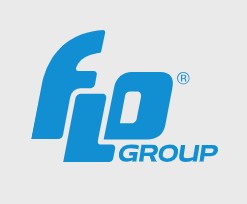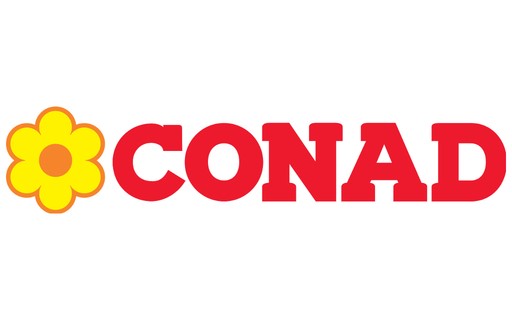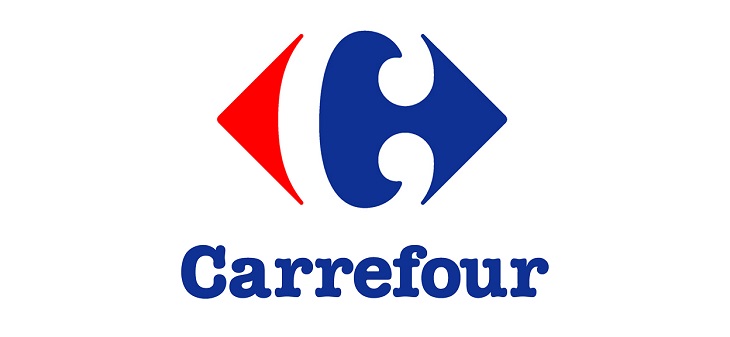Summary
Since 2020, the disposable tableware market has seen significant growth, with a compound annual growth rate (CAGR) of 5.4 percent projected between 2023 and 2028 globally, expected to reach a market value of $52.91 billion. This growth is partly driven by the increasing demand for compostable disposable tableware, which is also expected to rise with a CAGR of 6.5 percent from 2023 to 2031, potentially exceeding a value of $1 billion. This market shift is largely influenced by new EU regulations aiming to reduce single-use plastics and the growing eco-consciousness pushing for biodegradable solutions.
Evolving Trends and Consumption Dynamics in the Italian Disposable Tableware Market
The Italian disposable tableware market has been witnessing several transformative changes and evolving trends that signal a gradual but definitive shift in consumption patterns. The market's valuation of just over $520 million as of 2023 is projected to inch towards the $600 million mark by 2028, albeit at a conservative compound annual growth rate (CAGR) of approximately 2.75 percent, reflecting a growth pace that's half that of the global market expansion. A crucial driver of change within the Italian market is the stringent EU regulations that have catalyzed a paradigm shift from traditional plastic disposable tableware towards more eco-friendly, biodegradable alternatives. Consequently, a race to industrial and commercial innovation has been ignited, with key market players eagerly adapting to the increased eco-responsibility demanded by regulatory bodies and consumers alike. Households display a fluctuating trend in their average annual expenditure. Notably, there has been a decline of around 19.9 percent from 2018 to 2022, with a marked dip between 2018 and 2020, followed by a rebound in 2021, and ultimately a downtrend in 2022.
The expenditure figures for glassware, tableware, and kitchenware have seen a seesaw pattern, hinting at a variable demand. The commercial sector, encompassing restaurants and canteens, also reflects a mixed demand trend. The food service and catering sector witnessed a contraction of around 14.1 percent between 2018 and 2021, suggestive of a reduced demand for disposable tableware in these settings. In contrast, the restaurant sector showed resilience and adaptability with a 7.3 percent growth in active enterprises from 2017 to 2021, indicating potential demand stability or even growth in this segment. Further dissecting the restaurant sector reveals the burgeoning niche markets that might be propelling the demand for disposable tableware: take-away food preparation services expanded by approximately 7.3 percent, ice cream and pastry shops by around 12.2 percent, and mobile catering by a substantial 84.2 percent within the same timeframe. These sub-sectors highlight the evolving landscape where convenience, hygiene, and mobility are central to consumer preferences. Geographically, demand for disposable tableware is relatively consistent across Italy, with slight regional variances.
Spotlight on Key Market Players in the Italian Disposable Tableware Landscape
The Italian disposable tableware market is a vibrant ecosystem with several key players that steer the industry's growth and address the dynamic demand for hygienic, practical, and increasingly eco-friendly options. These companies exhibit a range of specializations, from traditional plasticware to innovative biodegradable products, and are crucial to understanding the current and future markets.
- ISAP Packaging s.p.a.: ISAP Packaging stands out as a veteran with over half a century of experience in manufacturing disposable tableware and rigid packaging for the food industry. As part of an industrial conglomerate alongside Flo, Dopla, and Nupik Internacional, ISAP taps into synergistic benefits to perfect their procurement and distribution strategies. They have an impressive export footprint, delivering Italian craftsmanship to various nations outside Europe.
- Usobio (C.P.B. Componenti Plastici Biodegradabili S.r.l.): Operating from its strategic locations in Trento and Bergamo, Usobio is a forward-thinking enterprise with a deep commitment to environmental sustainability. Their portfolio boasts an array of compostable products, including cutlery, plates, and biodegradable bags. Usobio epitomizes the Italian industry’s shift towards eco-friendly alternatives, aligning consumer needs with ecological responsibility.
- Flo s.p.a Flo s.p.a.: is synonymous with history and scale. Since 1973, they've been an iconic brand manufacturing a suite of products from disposable plastic tableware to vending machine cups. Their European presence is established through strategic subsidiaries, making them a household name not only in Italy but across the continent.
- GoldPlast s.p.a.: Three decades of market presence has positioned GoldPlast s.p.a as the go-to Italian brand for a wide assortment of high-quality tableware accessories. They distinguish themselves with a focus on recyclable materials, patience for the fine art of design, and a strong international network spanning over 30 countries, showcasing their global reach and environmental ethos.
- Ilip s.r.l: As a part of the ILPA Group, Ilip s.r.l leverages its leadership in the processing of plastics and bioplastics. Their offerings serve a diverse market segment with a focus on thermoformed packaging solutions. Ilip s.r.l demonstrates a comprehensive grasp of market needs, exporting products to businesses across the world from their European base.
to understand this market
Detailed content
 Inforamtion
Inforamtion
- Number of pages : 30 pages
- Format : Digital and PDF versions
- Last update : 31/10/2023
 Summary and extracts
Summary and extracts
1 Market Summary
1.1 Definition and presentation
The disposable tableware market represents all traditionally plastic disposable plates, cups, napkins, tablecloths, and cutlery.
The global disposable tableware market has grown in recent years, and the market is expected to continue to grow at a compound annual rate of 5.4 percent per year between 2023 and 2028, reaching a total value of $52.91 billion at the end of the period.
The compostable disposable tableware segment is also expected to grow in the coming years. A compound annual growth rate (CAGR) of 6.5 percent is expected between 2023 and 2031, thanks to which the economic value of this segment could exceed $1 billion.
The Italian disposable tableware market is growing more slowly than the rest of the world. Between 2023 and 2028, the annual growth rate is expected to be 2.75%, half that of the world market, and the total value could touch $600 million in value.
Historically dominated by price criteria, the Italian disposable tableware market is now facing a turning point: the ban on the use of single-use plastic approved by the European Union. In order to comply with this regulatory obligation, while freeing themselves from a brand image degraded by an eco-responsible consciousness, players in the disposable tableware market are now focusing on biodegradable products.
The other challenge for the Italian disposable tableware market remains recycling, in the context of waste recovery and reducing its environmental impact. To meet these new challenges, players in the disposable tableware market are engaged in a race for industrial and commercial innovation.
1.2 The global market
In ****, the global disposable tableware market reached a total economic value of $**.** billion. Between **** and ****, a compound annual growth rate (***) of *.* percent is expected, due to which the market could touch a total value of $**.** billion by the end of the period.
Disposable tableware market World, ****-****, in billions of ...
1.3 The Italian market
In **** the disposable tableware market is worth just over $*** million, and by **** the market could reach a total value of just under $*** million. However, the projected compound annual growth rate (***) for the Italian market between **** and **** is half of what is projected globally, standing at *.** percent.
Disposable tableware market Italy, ****-****, ...
1.4 Import - Export
To analyze Italy's international trade in disposable tableware, data for HS code ****** "Plastic tableware and kitchenware" are considered.
Between **** and ****, Italy's trade balance related to this specific sector is positive during the entire period. Over the *-year period considered, the economic value of exports is always higher than that of imports, ...
1.5 The consequences of the Russian-Ukrainian conflict
The outbreak of the Russian-Ukrainian conflict in February **** had major repercussions on the Italian economic system. In the absence of specific data on the disposable tableware sector, the general consumer price index is considered, assuming a correlation between the latter and that for the sector under consideration. As shown in the ...
2 Demand analysis
2.1 Demand in Italy
To analyze the demand for disposable tableware in Italy, the trend in average monthly household spending on glassware, tableware and household utensils, the number of businesses active in the catering and canteen sector and the number of businesses active in the restaurant sector are taken into account. In fact, these three ...
2.2 Demand drivers
The main drivers of demand for disposable tableware can vary according to use, context and consumer type. Specifically, it is possible to divide the types of consumers (***):
Households
Convenience: disposable tableware is extremely convenient to use, especially in situations where washing dishes is not practical or possible. They are ready to ...
2.3 Geographical distribution of demand
In order to analyze the geographic distribution of demand, a map was created with the average monthly expenditure of Italian households on glassware, tableware and household utensils assuming that this reflects the trend related to disposable tableware.
Considering data on Italian macroregions, demand is homogeneously distributed throughout the peninsula, with the ...
2.4 New demand trends: increasingly "green" consumption
Consumer preferences regarding disposable tableware are evolving in response to growing environmental awareness and regulations aimed at reducing plastic use. Here are some key trends emerging from consumer preferences:
Eco-friendly materials: In recent years, demand for eco-friendly disposable tableware has grown in response to environmental concerns and regulations limiting plastic use. ...
3 Market structure
3.1 The main manufacturers
A list of the main Italian manufacturers of disposable tableware is offered below.
ISAP Packaging s.p.a: founded in ****, ISAP Packaging specializes in the production of disposable tableware and rigid packaging for the food industry. In ****, Isap became part of the industrial group formed by three major companies in the ...
3.2 The value chain
3.3 Distribution
The distribution channels of disposable tableware can be divided into three macrocategories: large-scale retail trade (***) as well as the health care and public administration sectors. The main players for each of the above distribution channels are listed below.
Large-scale retail trade
Lidl: present in Italy since ****, the company is today one ...
4 Supply analysis
4.1 Features and products
Disposable tableware has several advantages, since it is:
Hygienic: due to their limited use, which prevents contamination; Economical: due to their low unit cost of production and ease of storage/transportation; Practical: since they allow great flexibility for one-time events; Lightweight: they are more convenient than tableware made of other, stiffer ...
4.2 The prices
The following are prices for some products available in the Italian market. The different types of products have been divided on the basis of the material used for production: plastic, paper, and other materials (***).
Plastic products
Paper product
Manufactured in other materials
4.3 New supply trends: compostability
One of the most significant trends is the production of compostable disposable tableware. These dishes are designed to decompose more rapidly than traditional plastic items, and can be disposed of along with food waste without the need for separation
Raw Materials: CPLA (***): one of the common raw materials used in the ...
5 Rules and regulations
5.1 Current regulations
The disposable tableware market, as with many other products, is regulated by various laws and regulations at both national and European levels. These laws are concerned with ensuring quality, food safety and environmental sustainability. Some of the main laws and regulations for the disposable tableware market in Italy are:
European Directive ...
5.2 Focus on the EN 13432 standard
European standard EN ***** defines the "characteristics of packaging that can be recovered by composting and biodegradation." It establishes the basis for the "test scheme and evaluation criteria for the final acceptance of packaging." it was mentioned in the Official Journal of the European Communities (***).
Packaging that meets this standard can then ...
6 Positioning of actors
6.1 Segmentation
Manufacturers
GDO Distributors
Wholesale distributors
COMPANY TURNOVER Cash and Carry (***) €**.***.*** (***) Pregis s.p.a €***.***.*** (***) Toninelli s.p.a €**.***.*** (***)
- IMI Industria Italiana Monouso
- Ilip s.r.l
- ISAP Packaging
- Flo s.p.a
- Pregis s.p.a
- Toninelli s.p.a
- Conad
- Carrefour Italia
All our studies are available online in PDF format
Take a look at an example of our research on another market!
Companies quoted in this study
This study contains a complete overview of the companies in the market, with the latest figures and news for each company. :
 Choosing this study means :
Choosing this study means :
Access to more than 35 hours of work
Our studies are the result of over 35 hours of research and analysis. Using our studies allows you to devote more time and added value to your projects.
Benefit from 6 years' experience and over 1,500 industry reports already produced
Our expertise enables us to produce comprehensive studies in all sectors, including niche and emerging markets.
Our know-how and methodology enable us to produce reports that offer unique value for money.
Access to several thousand articles and paid-for data
Businesscoot has access to all the paid economic press as well as exclusive databases to carry out its market research (over 30,000 articles and private sources).
To enhance our research, our analysts also use web indicators (semrush, trends, etc.) to identify market trends and company strategies. (Consult our paying sources)
Guaranteed support after your purchase
A team dedicated to after-sales service, to guarantee you a high level of satisfaction. +44 238 097 0676
A digital format designed for our users
Not only do you have access to a PDF, but also to a digital version designed for our customers. This version gives you access to sources, data in Excel format and graphics. The content of the study can therefore be easily retrieved and adapted for your specific needs.
 Our offers :
Our offers :
the disposable tableware market | Italy
- What are the figures on the size and growth of the market?
- What is driving the growth of the market and its evolution?
- What is the positioning of companies in the value chain?
- Data from several dozen databases
5 reports pack (-15%) IT Italy
- 5 reports at €75.6 excluding VAT per study to choose from our Italian catalogue for 12 months
- Save 15% on additional studies purchased
- Choose to be refunded any unused credit at the end of the 12-month period (duration of the pack)
See the terms and conditions of the pack and the refund of unused credit.

























